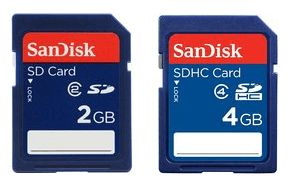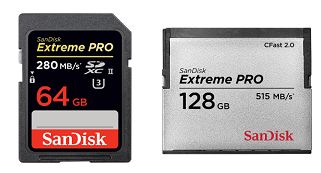Most people go by storage capacity or price while buying a Memory Card for their Digital Camera. However, there are other factors that are important and need to be taken into consideration while shopping for a Memory Card.
This Memory Card buying guide is designed to provide you with all the information required to buy the right Memory Card, matching its intended use.
Buy Memory Card for Your Digital Camera
These days you can buy a Memory Card for as little as $4, while a similar Memory Card from a reputable brand like SanDisk might be listed for more.
On the face of it, both Memory Cards appear to be doing the same job of storing and retrieving photos, files and other data. However, the cheaper Memory Card is likely to be slower and also more likely to give errors after a period of sustained use.
In the long run, Memory Cards from reputed brands are more reliable and provide better value for money compared to cheaper Memory Cards from unknown brands.
Hence, the advice is to go for known brands whenever speed, reliability and data security is important. You can try out unknown brands and cheaper Memory Cards in case you do not mind losing data and speed is not that important to you.
Types of Memory Cards
There are so many types of Memory Cards available in the market that an average customer would be confused about which one is right and which one really to go for.
It is important that you understand the various types of Memory Cards available in the market, so as to choose the right Memory Card that is suitable for its intended use.
SD Cards: Memory Cards with up to 2 GB storage capacity are classified as SD cards. Secure Digital Memory Cards popularly known as SD cards are the most common type of Memory Cards available in the market.

SDHC Cards: SDHC Cards offer a higher storage capacity compared to SD Cards. These cards range in storage capacity from 2 to 32 GB.
While SDHC cards look similar in shape and size to SD cards, they may not work on older digital cameras that were designed to work with SD cards. SDHC cards use FAT 32 file system while SD Cards use DFAT 12 and 16 file systems.
SDXC Cards: Memory Cards offering over 32 GB storage are classified as Secure Digital ‘Xtra Capacity’ Cards. These cards range in storage capacity from 32 to 2 TB and use exFAT file system.
SDXC cards are similar in size and shape to SD and SDHC cards. Before buying a SDXC card, you need to make sure and confirm that your digital camera supports the use of SDXC cards.
Micro SD Cards: Micro SD cards are smaller in size compared to regular SD Card. Hence, Micro SD Cards are used in Mobile Phones and some Cameras that support Micro SD cards.
Just like SD Cards, Micros SD Cards are also available in larger storage capacity (up to 32 GB).
CF Memory Cards: CompactFlash memory cards are considered to be professional grade Memory Cards suitable for use in advanced DSLR cameras. These cards offer ultra fast processing speeds and have large storage capacity.
Speed Class of SD Cards
Speed of an SD card comes into play when you want to use the SD Card in a Camera that is required for shooting HD Videos or high resolution images in quick succession.

As you can see in above image from SD Association, the speed rating of SD Cards is indicated right on the SD card itself. The fastest speed class is 10 while the slowest is 2. In between you will find SD Cards marked with speed class 6 and 4.
In general, the slowest Class 2 card can handle a sustained writing speed of 2 MB/sec while the fastest Class 10 SD Card can offer a sustained writing speed of 10 MB/sec.
You may comes across SD cards claiming more speeds than its class, but you need to be aware that such claims are based on possible speed and not sustained speed.
Ultra High Speed SD Cards
In addition to the above mentioned speed classes, there are two Ultra High Speed (UHS) speed classes that were introduced to classify SD cards with very high speeds and high storage capacities.
UHS-II Class: UHS-II class SD Cards feature fast data transfer rates, exceeding the amount of data streaming through a Camera’s buffer while shooting high quality HD videos. This allows the Camera to shoot HD Videos and take rapid Photos without experiencing any lag or interruption due to a clogged image buffer.

A good example of UHS-11 Class Memory Card is SanDisk Extreme Pro which claims a data transfer rate of up to 250MB/s and has ample capacity (64 GB) to store high resolution images and videos.
CFast 2.0 standard: These Memory Cards feature ultra high data transfer rates. SanDisk Extreme Pro CFast 2.0 is rated to be one of the World’s fastest Memory Cards, capable of transferring data with blazing fast speed – 515 MB/s write speed and 440 MB/s read speed.
How to Buy a Memory Card
For most general purpose use including photos and standard video recording, a SD card with a speed Class 2 and storage capacity of 2 to 8 GB should be good enough.
When you are serious about photography, you should start looking for a SD card with more speed and capable of shooting high resolution photos and videos. In general, you can make use of the following guidelines provided by SD Association.
| Speed Class | Application |
|---|---|
| Normal Speed | |
| Class 2 | Standard Video Recording |
| Class 4 | HD and Full HD Video Recording |
| Class 6 | HD and Full HD Video Recording |
| High Speed | |
| Class 10 | Full HD Video Recording, Continuous HD Still Photos |
| UHS Speed Class | |
| UHS-I | 4k, 2k Video Recording |
| UHS-II | 4k, 2K Video Recording |
Another factor to consider in case of professional photography is the MTBF rate (Mean Time Before Failure) rate, so as to rule out the possibility of losing photos due to SD Card failure. Most well known brands provide MTBF values that you can take a look at.